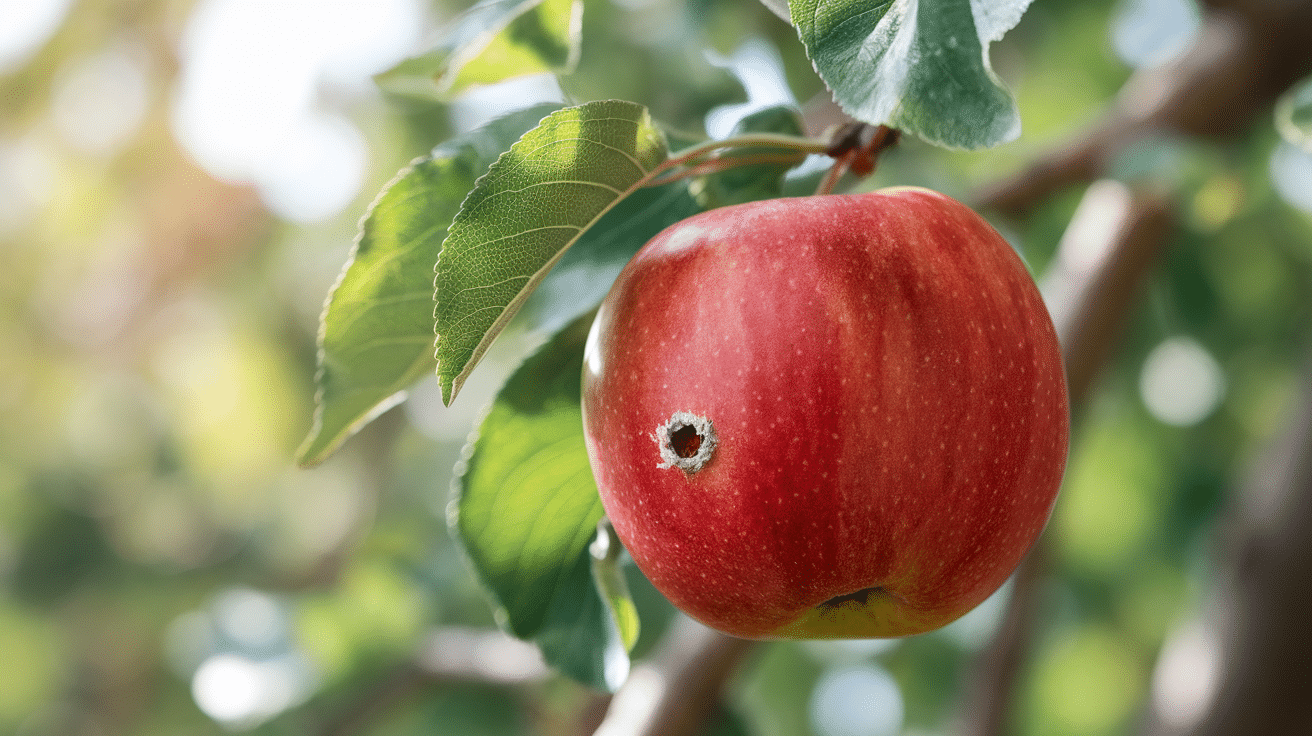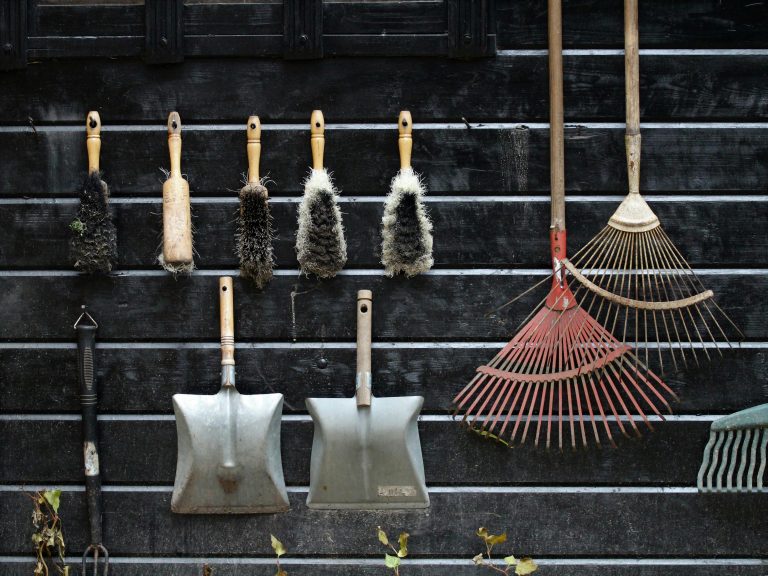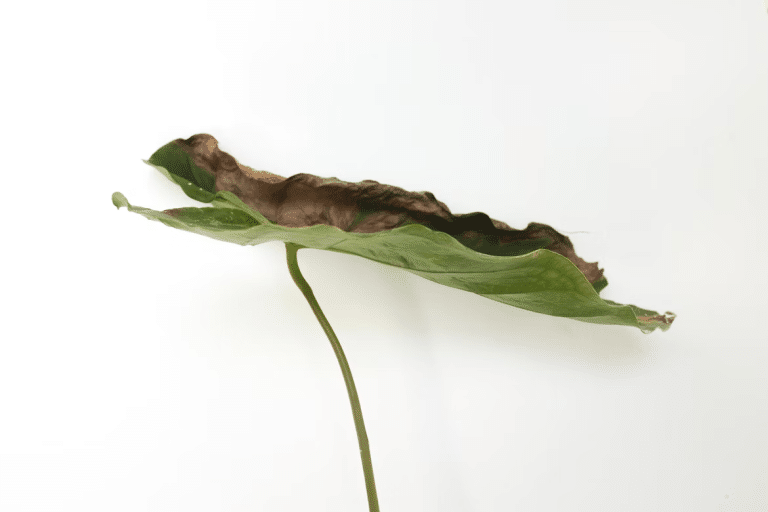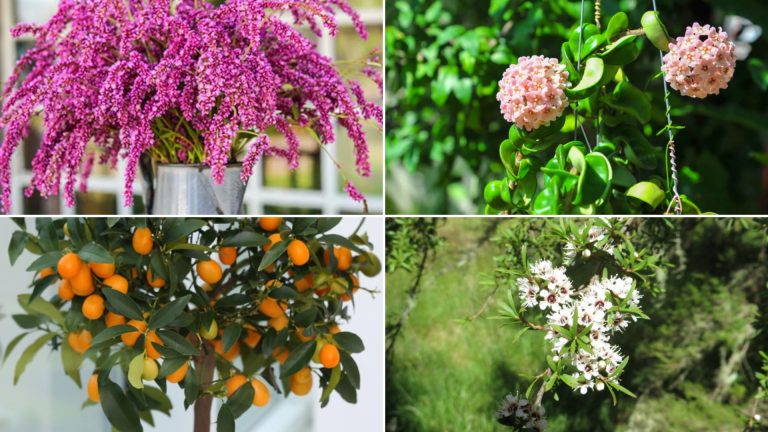When To Spray Apple Trees for Worms?
Nothing feels worse than biting into a fresh apple from your tree, only to find a worm tunnel right through the middle.
You’ve spent months caring for your apple trees, watching the blossoms turn to fruit, and dreaming of that perfect harvest.
The good news is that you can prevent worms in your apples with the right timing and organic care methods.
Success comes down to understanding when pests are most active and applying treatments at just the right moments in their life cycles.
This guide will teach you exactly when to spray your apple trees for maximum protection. We’ll cover the main pests that cause worm damage, their seasonal patterns, and the best organic solutions to keep your harvest clean and healthy.
For those interested in sustainable practices, Find out off-grid gardening techniques can offer valuable insights in maintaining healthy apple trees without relying heavily on chemical interventions.
What Causes Worms in Apples?
The “worms” in your apples are actually larvae from two main pests. Each one attacks at different times, so knowing when they strike helps you plan your spray schedule.
1. Codling Moth
The damage: Larvae bore into apples and tunnel to the core. Creates the classic “worm hole” exit.
When they attack:
- First wave: Late spring (petal fall time)
- Second wave: Mid to late summer
2. Apple Maggot Fly
The damage: Maggots tunnel through the apple flesh. Makes fruit soft and full of brown spots.
When they attack:
- Peak season: Mid-July through September
- Prefers late-season apple varieties
Why Timing Matters in Spraying?
Here’s the key principle that guides all successful pest control: most sprays work best on eggs or surface-feeding larvae — once inside the fruit, the damage is done.
All insects go through predictable stages: egg, larva, pupa, and adult. Your window of opportunity is narrow but powerful. Hit pests during egg-laying or early larval stages, and you can prevent an entire generation from establishing.
Spray too early and you waste money while killing beneficial insects before pests arrive. Spray too late and you’re fighting a losing battle.
Beneficial insects like predatory mites and parasitic wasps are your natural allies, but poorly timed sprays can eliminate these helpers.
Seasonal Spray Calendar- Organic Focused
Follow this five-stage organic approach to protect your apple trees throughout the year. Each season targets different pests and tree development stages for maximum effectiveness.
1. Winter Rest Period: Dormant Season
- Timing: Before buds start to swell, usually February to early March.
- Target: Overwintering eggs, scale insects, woolly aphids tucked into bark crevices.
- Key sprays: Horticultural oil, neem oil, copper spray. Apply during dry weather when temperatures are above 40°F for maximum effectiveness.
2. The Early Spring: Bud Swell Stage
- Timing: Just as buds start to swell, but before any flowers open.
- Target: Early emerging insects and first-wave codling moth activity.
- Key sprays: Insecticidal soap, neem oil. This is your last chance for control before pollinators arrive.
3. Petal Drop Period: Post-Bloom Control
- Timing: Right after petals drop, usually late April to early May.
- Target: Codling moth larvae (this timing can make the difference between a clean harvest and disappointment).
- Key sprays: Spinosad (Entrust), Bt (Bacillus thuringiensis). Remember our core principle – catch them before they get inside the fruit.
4. Peak Season: Summer Vigilance
- Timing: July through August, based on monitoring rather than rigid schedules.
- Target: Second-generation codling moths, apple maggot flies.
- Key approaches: Kaolin clay (Surround), red sticky traps, continued Spinosad applications every 10-14 days based on trap counts.
Pro tip: In harvest season, remove all dropped fruit weekly and clean up fallen leaves. No spraying needed – good sanitation breaks pest life cycles.
Best Organic Sprays to Control Worms in Apple Trees
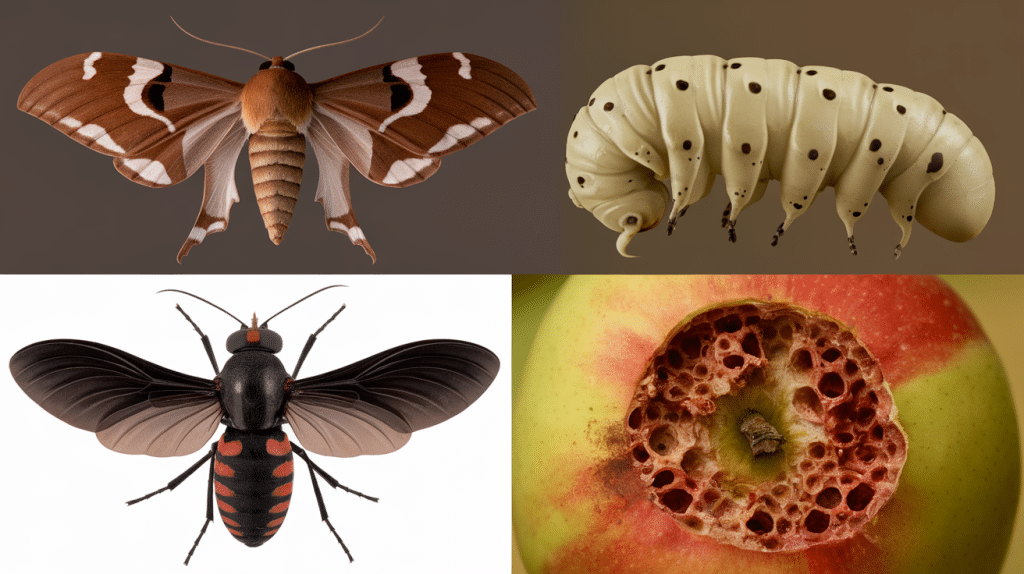
Having the right tools makes all the difference in organic pest control. These five organic sprays form the backbone of effective apple tree protection, each with specific strengths and best-use scenarios.
1. Neem Oil: The Multi-Purpose Champion
Neem oil stands out as one of the most versatile organic treatments available. Unlike simple contact killers, neem oil works on multiple levels to disrupt pest life cycles while actually improving your tree’s health.
How it works: Neem contains compounds that interfere with insect hormone systems, making it harder for pests to feed, grow, and reproduce. At the same time, the fatty acids in neem oil feed beneficial microbes on your tree’s surface, strengthening natural defenses.
Best uses: Dormant season applications, early season pest prevention, and as part of summer rotation programs. Mix 1-2 tablespoons per gallon of water and apply during cooler parts of the day.
2. Spinosad (Entrust): Fast-Acting Larval Control
When you need quick results against active infestations, Spinosad delivers. This naturally-derived compound comes from soil bacteria and specifically targets the nervous systems of caterpillars and other larvae.
How it works: Pests stop feeding within hours of contact and die within 1-2 days. The key advantage is speed – you see results quickly when timing is critical.
Best uses: Post-bloom applications for codling moth larvae and summer treatments for second-generation pests. Follow label rates carefully, as this is a more potent organic option.
3. Bt (Bacillus thuringiensis): Safe and Selective
BT represents the gold standard for organic caterpillar control. This naturally occurring bacteria produces proteins that are toxic only to moth and butterfly larvae, leaving beneficial insects completely unharmed.
How it works: When caterpillars eat Bt-treated leaves or fruit surfaces, the bacteria multiply in their gut and produce toxins. The process takes 2-3 days but provides excellent control with zero impact on pollinators or predatory insects.
Best uses: Any time you need caterpillar control without affecting beneficial insects. Particularly valuable during periods when pollinators are active. Apply in the evening to protect from UV breakdown.
4. Kaolin Clay (Surround): The Protective Barrier
This approach works differently from other sprays by creating a physical barrier that makes your fruit less attractive to egg-laying females. The fine white clay coating confuses pests and makes it difficult for them to recognize suitable hosts.
How it works: Applied as a spray, kaolin clay dries to form a thin, white film over fruit and leaves. Female moths and flies have trouble recognizing treated fruit as suitable egg-laying sites.
Best uses: Summer protection during peak egg-laying periods. Particularly effective against apple maggot flies. Reapply after rain and expect your apples to look chalky-white until harvest.
5. Copper Sprays: Disease Prevention Specialist
While primarily a fungicide, copper sprays play a crucial role in preventing bacterial diseases like fire blight that can devastate apple trees; some formulations are gentle enough for bloom-time applications.
How it works: Copper ions disrupt bacterial cell walls and fungal spore development. Different formulations have varying strengths and safety profiles.
Best uses: Dormant season disease prevention and specialized bloom-time applications for fire blight control. Use copper octanoate formulations during bloom, and stronger copper sulfate during dormancy.
Organic Practices: Beyond Sprays
- Pheromone traps help time spray applications by showing when adult moths are active.
- Red sphere traps attract apple maggot flies for both monitoring and control.
- Proper pruning improves spray coverage and air circulation.
- Adequate spacing between trees prevents humid conditions that promote disease.
- Healthy soil with compost applications creates trees that resist pest damage naturally.
Conclusion
Clean, worm-free apples aren’t just a dream when you follow proper spray timing. The difference between success and failure often comes down to just 2-3 critical applications at the right moments in pest life cycles.
You now have the roadmap to protect your harvest without harmful chemicals. Post-bloom timing stops codling moths before they damage fruit. Summer monitoring prevents apple maggot infestations. Dormant season prep reduces next year’s pest pressure.
Start tracking pest activity in the orchard this season. Set up pheromone traps, mark your calendar for key spray windows, and keep notes on what works. Your trees will reward consistent organic care with years of healthy, delicious fruit.
Ready to put this into action? Begin with dormant season spraying and build your confidence with each successful growing season.

